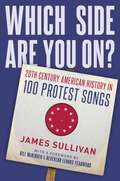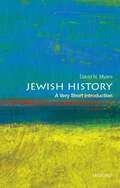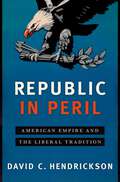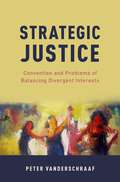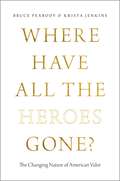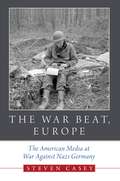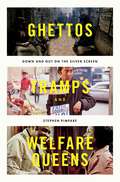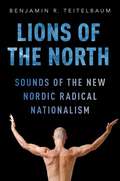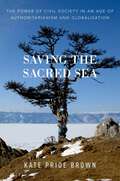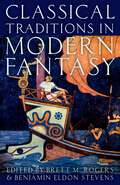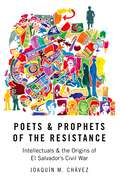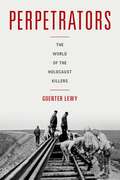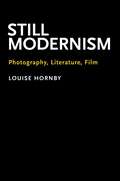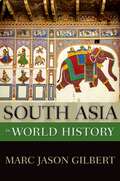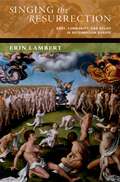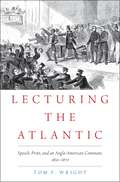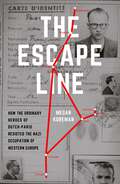- Table View
- List View
Which Side Are You On?: 20th Century American History in 100 Protest Songs
by James SullivanWhen he emerged from the nightclubs of Greenwich Village, Bob Dylan was often identified as a "protest" singer. As early as 1962, however, Dylan was already protesting the label: "I don't write no protest songs," he told his audience on the night he debuted "Blowin' in the Wind." "Protest" music is largely perceived as an unsubtle art form, a topical brand of songwriting that preaches to the converted. But popular music of all types has long given listeners food for thought. Fifty years before Vietnam, before the United States entered World War I, some of the most popular sheet music in the country featured anti-war tunes. The labor movement of the early decades of the century was fueled by its communal "songbook." The Civil Rights movement was soundtracked not just by the gorgeous melodies of "Strange Fruit" and "A Change Is Gonna Come," but hundreds of other gospel-tinged ballads and blues. In Which Side Are You On, author James Sullivan delivers a lively anecdotal history of the progressive movements that have shaped the growth of the United States, and the songs that have accompanied and defined them. Covering one hundred years of social conflict and progress across the twentieth century and into the early years of the twenty-first, this book reveals how protest songs have given voice to the needs and challenges of a nation and asked its citizens to take a stand--asking the question "Which side are you on?"
Jewish History: A Very Short Introduction (Very Short Introductions)
by David N. MyersHow have the Jews survived? For millennia, they have defied odds by overcoming the travails of exile, persecution, and recurring plans for their annihilation. Many have attempted to explain this singular success as a result of divine intervention. In this engaging book, David N. Myers charts the long journey of the Jews through history. At the same time, it points to two unlikely-and decidedly this-worldly--factors to explain the survival of the Jews: antisemitism and assimilation. Usually regarded as grave dangers, these two factors have continually interacted with one other to enable the persistence of the Jews. At every turn in their history, not just in the modern age, Jews have adapted to new environments, cultures, languages, and social norms. These bountiful encounters with host societies have exercised the cultural muscle of the Jews, preventing the atrophy that would have occurred if they had not interacted so extensively with the non-Jewish world. It is through these encounters--indeed, through a process of assimilation--that Jews came to develop distinct local customs, speak many different languages, and cultivate diverse musical, culinary, and intellectual traditions. Left unchecked, the Jews' well-honed ability to absorb from surrounding cultures might have led to their disappearance. And yet, the route toward full and unbridled assimilation was checked by the nearly constant presence of hatred toward the Jew. Anti-Jewish expression and actions have regularly accompanied Jews throughout history. Part of the ironic success of antisemitism is its malleability, its talent in assuming new forms and portraying the Jew in diverse and often contradictory images--for example, at once the arch-capitalist and revolutionary Communist. Antisemitism not only served to blunt further assimilation, but, in a paradoxical twist, affirmed the Jew's sense of difference from the host society. And thus together assimilation and antisemitism (at least up to a certain limit) contribute to the survival of the Jews as a highly adaptable and yet distinct group.
Republic in Peril: American Empire and the Liberal Tradition
by David C. HendricksonIn Republic in Peril, David C. Hendrickson advances a powerful critique of American policy since the end of the Cold War. America's outsized military spending and global commitments, he shows, undermine rather than uphold international order. They raise rather than reduce the danger of war, imperiling both American security and domestic liberty. An alternative path lies in a new internationalism in tune with the United Nations Charter and the philosophy of republican liberty embraced by America's founders. The sum of the conventional view-touted by the national security establishment and embraced by Hillary Clinton and George W. Bush-is that it is impossible to have a liberal world order unless America has hostile relations with Russia, China, and Iran, together with a shifting cast of lesser states. Donald Trump, iconoclastic is so many ways, promises to bring the militarization of U.S. foreign policy to an entirely new level. But it is precisely those who would lead us into battle with "hostile states" who threaten a liberal world order, because they look to a competition that is to be settled through dominance rather than reciprocity. Formed by ideology, greatly fortified by special interests, the U.S. posture has put it into standing collision with other great powers. The flaws of the U.S.-led world order-a chronic overreliance on force, habitual violations of the rules governing intervention-should not be attributed to liberalism but to a flock of "neo-isms" parading in its name. In searching for a remedy, we must find it by rediscovering, not repudiating, the liberal tradition. Hendrickson offers a panoramic view of America's choices in foreign policy, analyzing the vested interests and ideologies that have justified a sprawling global empire over the last 25 years. Hendrickson recovers the tradition of liberal pluralism, one that sees in nonintervention, the balance of power, and great power concert the formula for a durable peace. Rather than claiming a superior role as judge, jury, and executioner, the United States must share power in accordance with the Golden Rule. It needs restraint rather than braggadocio, acceptance of its role as a nation among the nations rather than arrogant pretensions regarding its exceptional virtue and superior wisdom. Ranging widely, from the classics of American political thought and international theory to the bewildering thicket of hot wars and regional feuds across the globe that embroil America, Hendrickson forcefully shows that the militarization of U.S. foreign policy is deeply at odds with the animating purposes and principles of the American experiment.
Republic in Peril: American Empire and the Liberal Tradition
by David C. HendricksonIn Republic in Peril, David C. Hendrickson advances a powerful critique of American policy since the end of the Cold War. America's outsized military spending and global commitments, he shows, undermine rather than uphold international order. They raise rather than reduce the danger of war, imperiling both American security and domestic liberty. An alternative path lies in a new internationalism in tune with the United Nations Charter and the philosophy of republican liberty embraced by America's founders. The sum of the conventional view-touted by the national security establishment and embraced by Hillary Clinton and George W. Bush-is that it is impossible to have a liberal world order unless America has hostile relations with Russia, China, and Iran, together with a shifting cast of lesser states. Donald Trump, iconoclastic is so many ways, promises to bring the militarization of U.S. foreign policy to an entirely new level. But it is precisely those who would lead us into battle with "hostile states" who threaten a liberal world order, because they look to a competition that is to be settled through dominance rather than reciprocity. Formed by ideology, greatly fortified by special interests, the U.S. posture has put it into standing collision with other great powers. The flaws of the U.S.-led world order-a chronic overreliance on force, habitual violations of the rules governing intervention-should not be attributed to liberalism but to a flock of "neo-isms" parading in its name. In searching for a remedy, we must find it by rediscovering, not repudiating, the liberal tradition. Hendrickson offers a panoramic view of America's choices in foreign policy, analyzing the vested interests and ideologies that have justified a sprawling global empire over the last 25 years. Hendrickson recovers the tradition of liberal pluralism, one that sees in nonintervention, the balance of power, and great power concert the formula for a durable peace. Rather than claiming a superior role as judge, jury, and executioner, the United States must share power in accordance with the Golden Rule. It needs restraint rather than braggadocio, acceptance of its role as a nation among the nations rather than arrogant pretensions regarding its exceptional virtue and superior wisdom. Ranging widely, from the classics of American political thought and international theory to the bewildering thicket of hot wars and regional feuds across the globe that embroil America, Hendrickson forcefully shows that the militarization of U.S. foreign policy is deeply at odds with the animating purposes and principles of the American experiment.
Strategic Justice: Convention and Problems of Balancing Divergent Interests (Oxford Moral Theory)
by Peter VanderschraafIn Strategic Justice, Peter Vanderschraaf argues that justice can be properly understood as a body of special social conventions. The idea that justice is at bottom conventional has ancient roots, but has never been central in philosophy because convention itself has historically been so poorly understood. Vanderschraaf gives a new defense of this idea that integrates insights and arguments of past masters of moral and political philosophy together with recent analytical and empirical concepts and results from the social sciences. One of the substantial contributions of this work is a new account of convention that is sufficiently general for summarizing problems of justice, the social interactions where the interests of the agents involved diverge. Conventions are defined as equilibrium solutions to the games that summarize social interactions having a variety of possible stable resolutions and a corresponding plurality of equilibria. The basic idea that justice consists of a system of rules for mutual advantage is explored in depth using this game-theoretic analysis of convention. Justice is analyzed as a system of conventions that are stable with respect to renegotiation in the face of societal changes such as resource depletion, technological innovation and population decline or growth. This new account of justice-as-convention explains in a cogent and natural way what justice is and why individuals have good reason to obey its requirements. Contrary to what many have thought, this new account shows how the justice-as-convention view can give a good account of why justice requires that the most vulnerable members of society receive protections and benefits from the cooperative surplus created by general compliance with justice.
STRATEGIC JUSTICE OXFMT C: Convention and Problems of Balancing Divergent Interests (Oxford Moral Theory)
by Peter VanderschraafIn Strategic Justice, Peter Vanderschraaf argues that justice can be properly understood as a body of special social conventions. The idea that justice is at bottom conventional has ancient roots, but has never been central in philosophy because convention itself has historically been so poorly understood. Vanderschraaf gives a new defense of this idea that integrates insights and arguments of past masters of moral and political philosophy together with recent analytical and empirical concepts and results from the social sciences. One of the substantial contributions of this work is a new account of convention that is sufficiently general for summarizing problems of justice, the social interactions where the interests of the agents involved diverge. Conventions are defined as equilibrium solutions to the games that summarize social interactions having a variety of possible stable resolutions and a corresponding plurality of equilibria. The basic idea that justice consists of a system of rules for mutual advantage is explored in depth using this game-theoretic analysis of convention. Justice is analyzed as a system of conventions that are stable with respect to renegotiation in the face of societal changes such as resource depletion, technological innovation and population decline or growth. This new account of justice-as-convention explains in a cogent and natural way what justice is and why individuals have good reason to obey its requirements. Contrary to what many have thought, this new account shows how the justice-as-convention view can give a good account of why justice requires that the most vulnerable members of society receive protections and benefits from the cooperative surplus created by general compliance with justice.
WHERE HAVE ALL THE HEROES GONE C: The Changing Nature of American Valor
by Bruce Peabody Krista JenkinsFrom the men and women associated with the American Revolution and Civil War to the seminal figures in the struggles for civil and women's rights, Americans have been fascinated with icons of great achievement, or at least reputation. But who spins today's narratives about American heroism, and to what end? In Where Have All the Heroes Gone?, Bruce Peabody and Krista Jenkins draw on the concept of the American hero to show an important gap between the views of political and media elites and the attitudes of the mass public. The authors contend that important changes over the past half century, including the increasing scope of new media and people's deepening political distrust, have drawn both politicians and producers of media content to the hero meme. However, popular reaction to this turn to heroism has been largely skeptical. As a result, the conversations and judgments of ordinary Americans, government officials, and media elites are often deeply divergent. Investigating the story of American heroes over the past five decades provides a narrative that can teach us about such issues as political socialization, institutional trust, and political communication.
The War Beat, Europe: The American Media at War Against Nazi Germany
by Steven CaseyFrom the North African desert to the bloody stalemate in Italy, from the London blitz to the D-Day beaches, a group of highly courageous and extremely talented American journalists reported the war against Nazi Germany for a grateful audience. Based on a wealth of previously untapped primary sources, War Beat, Europe provides the first comprehensive account of what these reporters witnessed, what they were allowed to publish, and how their reports shaped the home front's perception of some of the most pivotal battles in American history. In a dramatic and fast-paced narrative, Steven Casey takes readers from the inner councils of government, where Franklin D. Roosevelt and George Marshall held clear views about how much blood and gore Americans could stomach, to the command centers in London, Algiers, Naples, and Paris, where many reporters were stuck with the dreary task of reporting the war by communiqué. At the heart of this book is the epic journey of reporters like Wes Gallagher and Don Whitehead of the Associated Press, Drew Middleton of the New York Times, Bill Stoneman of the Chicago Daily News, and John Thompson of the Chicago Tribune; of columnists like Ernie Pyle and Hal Boyle; and of photographers like Margaret Bourke-White and Robert Capa. These men and women risked their lives on countless occasions to get their dispatches and their images back home. In providing coverage of war in an open society, they also balanced the weighty responsibility of adhering to censorship regulations while working to sell newspapers and maintaining American support for the war. These reporters were driven by a combination of ambition, patriotism, and belief in the cause. War Beat, Europe shows how they earned their reputation as America's golden generation of journalists and wrote the first draft of World War II history for posterity.
The War Beat, Europe: The American Media at War Against Nazi Germany
by Steven CaseyFrom the North African desert to the bloody stalemate in Italy, from the London blitz to the D-Day beaches, a group of highly courageous and extremely talented American journalists reported the war against Nazi Germany for a grateful audience. Based on a wealth of previously untapped primary sources, War Beat, Europe provides the first comprehensive account of what these reporters witnessed, what they were allowed to publish, and how their reports shaped the home front's perception of some of the most pivotal battles in American history. In a dramatic and fast-paced narrative, Steven Casey takes readers from the inner councils of government, where Franklin D. Roosevelt and George Marshall held clear views about how much blood and gore Americans could stomach, to the command centers in London, Algiers, Naples, and Paris, where many reporters were stuck with the dreary task of reporting the war by communiqué. At the heart of this book is the epic journey of reporters like Wes Gallagher and Don Whitehead of the Associated Press, Drew Middleton of the New York Times, Bill Stoneman of the Chicago Daily News, and John Thompson of the Chicago Tribune; of columnists like Ernie Pyle and Hal Boyle; and of photographers like Margaret Bourke-White and Robert Capa. These men and women risked their lives on countless occasions to get their dispatches and their images back home. In providing coverage of war in an open society, they also balanced the weighty responsibility of adhering to censorship regulations while working to sell newspapers and maintaining American support for the war. These reporters were driven by a combination of ambition, patriotism, and belief in the cause. War Beat, Europe shows how they earned their reputation as America's golden generation of journalists and wrote the first draft of World War II history for posterity.
Ghettos, Tramps, and Welfare Queens: Down and Out on the Silver Screen
by Stephen PimpareGhettos, Tramps, and Welfare Queens: Down & Out on the Silver Screen explores how American movies have portrayed poor and homeless people from the silent era to today. It provides a novel kind of guide to social policy, exploring how ideas about poor and homeless people have been reflected in popular culture and evaluating those images against the historical and contemporary reality. Richly illustrated and examining nearly 300 American-made films released between 1902 and 2015, Ghettos, Tramps, and Welfare Queens finds and describes representations of poor and homeless people and the places they have inhabited throughout the century-long history of U.S. cinema. It moves beyond the merely descriptive to deliberate whether cinematic representations of homelessness and poverty changed over time, and if there are patterns to be discerned. Ultimately, the text offers a preliminary response to a handful of harder questions about causation and consequence: Why are these portrayals as they are? Where do they come from? Are they a reflection of American attitudes and policies toward marginalized populations, or do they help create them? What does this all mean for politics and policymaking? Of interest to movie buffs and film scholars, cultural critics and historians, policy analysts, and those curious to know more about homelessness and American poverty, Ghettos, Tramps, and Welfare Queens is a unique window into American politics, history, policy, and culture -- it is an entertaining and enlightening journey.
Ghettos, Tramps, and Welfare Queens: Down and Out on the Silver Screen
by Stephen PimpareGhettos, Tramps, and Welfare Queens: Down & Out on the Silver Screen explores how American movies have portrayed poor and homeless people from the silent era to today. It provides a novel kind of guide to social policy, exploring how ideas about poor and homeless people have been reflected in popular culture and evaluating those images against the historical and contemporary reality. Richly illustrated and examining nearly 300 American-made films released between 1902 and 2015, Ghettos, Tramps, and Welfare Queens finds and describes representations of poor and homeless people and the places they have inhabited throughout the century-long history of U.S. cinema. It moves beyond the merely descriptive to deliberate whether cinematic representations of homelessness and poverty changed over time, and if there are patterns to be discerned. Ultimately, the text offers a preliminary response to a handful of harder questions about causation and consequence: Why are these portrayals as they are? Where do they come from? Are they a reflection of American attitudes and policies toward marginalized populations, or do they help create them? What does this all mean for politics and policymaking? Of interest to movie buffs and film scholars, cultural critics and historians, policy analysts, and those curious to know more about homelessness and American poverty, Ghettos, Tramps, and Welfare Queens is a unique window into American politics, history, policy, and culture -- it is an entertaining and enlightening journey.
LIONS OF THE NORTH C: Sounds of the New Nordic Radical Nationalism
by Benjamin R. TeitelbaumOften labeled "neo-Nazis" or "right-wing extremists," radical nationalists in the Nordic countries have always relied on music to voice their opposition to immigration and multiculturalism. These actors shook political establishments throughout Sweden, Denmark, and Norway during the 1980s and 1990s by rallying around white power music and skinhead subculture. But though nationalists once embraced a reputation for crude chauvinism, they are now seeking to reinvent themselves as upstanding and righteous, and they are using music to do it. Lions of the North explores this transformation of anti-immigrant activism in the Nordic countries as it manifests in thought and sound. Offering a rare ethnographic glimpse into controversial and secretive political movements, it investigates changes in the music nationalists make and patronize, reading their puzzling embrace of lite pop, folk music, even rap and reggae as attempts to escape stereotypes and craft a new image for themselves. Lions of the North not only exposes the dynamic relationship between music and politics, but also the ways radical nationalism is adapting to succeed in some of the most liberal societies in the world.
Saving the Sacred Sea: The Power of Civil Society in an Age of Authoritarianism and Globalization
by Kate Pride Brown"Civil society" is a loaded concept in Russia; during the Soviet period, the voices that heralded civil society were the same ones that demanded the Union's dissolution. So, for the Kremlin, civil society is not the guarantor of democracy, but a force that has the power to end governments. This book looks at how civil society negotiates power on a global stage, under Russia's authoritarian regime, and in a particularly isolated and remote part of the world: within environmental activism around Lake Baikal in Siberia. More than a mile deep, Lake Baikal is the oldest, deepest, and most voluminous lake on the Earth, and home to thousands of endemic species. It is also ecologically unique in that it is oxygenated to its maximum depth and supports life even at the lake floor -- a phenomenon occurring nowhere else on the planet. The lake is not just a natural wonder, but home to a strong environmentalist community that works tirelessly to protect the lake from human harm. Environmentalism at Baikal began in the late 1950s, eventually igniting the first national protest in the USSR. They have remained active in some form ever since, across the years of chaos, instability, and crisis, from the opening of Russia to the forces of globalization to the authoritarianism of Putin in the present. This book examines the struggle of Baikal environmentalists to develop a new understanding of civil society under conditions of globalization and authoritarianism. Through extended, historically-informed ethnographic analysis, Kate Pride Brown argues that civil society is engaged with political and economic elites in a dynamic struggle within a field of power. Understanding the field of power helps to explain a number of contradictions. For example, why does civil society seem to both bolster democracy and threaten it? Why do capitalist corporations and environmental organizations form partnerships despite their general hostility toward each other? And why has democracy proven to be so elusive in Russia? The field of power posits new answers to these questions, as Baikal environmental activists struggle to protect and save their Sacred Sea.
SAVING THE SACRED SEA C: The Power of Civil Society in an Age of Authoritarianism and Globalization
by Kate Pride Brown"Civil society" is a loaded concept in Russia; during the Soviet period, the voices that heralded civil society were the same ones that demanded the Union's dissolution. So, for the Kremlin, civil society is not the guarantor of democracy, but a force that has the power to end governments. This book looks at how civil society negotiates power on a global stage, under Russia's authoritarian regime, and in a particularly isolated and remote part of the world: within environmental activism around Lake Baikal in Siberia. More than a mile deep, Lake Baikal is the oldest, deepest, and most voluminous lake on the Earth, and home to thousands of endemic species. It is also ecologically unique in that it is oxygenated to its maximum depth and supports life even at the lake floor -- a phenomenon occurring nowhere else on the planet. The lake is not just a natural wonder, but home to a strong environmentalist community that works tirelessly to protect the lake from human harm. Environmentalism at Baikal began in the late 1950s, eventually igniting the first national protest in the USSR. They have remained active in some form ever since, across the years of chaos, instability, and crisis, from the opening of Russia to the forces of globalization to the authoritarianism of Putin in the present. This book examines the struggle of Baikal environmentalists to develop a new understanding of civil society under conditions of globalization and authoritarianism. Through extended, historically-informed ethnographic analysis, Kate Pride Brown argues that civil society is engaged with political and economic elites in a dynamic struggle within a field of power. Understanding the field of power helps to explain a number of contradictions. For example, why does civil society seem to both bolster democracy and threaten it? Why do capitalist corporations and environmental organizations form partnerships despite their general hostility toward each other? And why has democracy proven to be so elusive in Russia? The field of power posits new answers to these questions, as Baikal environmental activists struggle to protect and save their Sacred Sea.
CLASSICAL TRADITIONS IN MODERN FANTASY C
by Brett M. Rogers and Benjamin Eldon StevensClassical Traditions in Modern Fantasy is the first collection of essays in English focusing on how fantasy draws deeply on ancient Greek and Roman mythology, philosophy, literature, history, art, and cult practice. Presenting fifteen all-new essays intended for both scholars and other readers of fantasy, this volume explores many of the most significant examples of the modern genre-including the works of H. P. Lovecraft, J. R. R. Tolkien's The Hobbit, C. S. Lewis's Chronicles of Narnia, J. K. Rowling's Harry Potter series, George R. R. Martin's Game of Thrones series, and more-in relation to important ancient texts such as Aeschylus' Oresteia, Aristotle's Poetics, Virgil's Aeneid, and Apuleius' The Golden Ass. These varied studies raise fascinating questions about genre, literary and artistic histories, and the suspension of disbelief required not only of readers of fantasy but also of students of antiquity. Ranging from harpies to hobbits, from Cyclopes to Cthulhu, and all manner of monster and myth in-between, this comparative study of Classics and fantasy reveals deep similarities between ancient and modern ways of imagining the world. Although antiquity and the present day differ in many ways, at its base, ancient literature resonates deeply with modern fantasy's image of worlds in flux and bodies in motion.
Poets and Prophets of the Resistance: Intellectuals and the Origins of El Salvador's Civil War
by Joaquín M. ChávezPoets and Prophets of the Resistance offers a ground-up history and fresh interpretation of the polarization and mobilization that brought El Salvador to the eve of civil war in 1980. Challenging the dominant narrative that university students and political dissidents primarily formed the Salvadoran guerrillas, Joaquín Chávez argues that El Salvador's socioeconomic and political crises of the 1970s fomented a groundswell of urban and peasant intellectuals who collaborated to spur larger revolutionary social movements. Drawing on new archival sources and in-depth interviews, Poets and Prophets of the Resistance contests the idea that urban militants and Roman Catholic priests influenced by Liberation Theology single-handedly organized and politicized peasant groups. Chávez shows instead how peasant intellectuals acted as political catalysts among their own communities first, particularly in the region of Chalatenango, laying the groundwork for the peasant movements that were to come. In this way, he contends, the Salvadoran insurgency emerged in a dialogue between urban and peasant intellectuals working together to create and execute a common revolutionary strategy--one that drew on cultures of resistance deeply rooted in the country's history, poetry, and religion. Focusing on this cross-pollination, this book introduces the idea that a "pedagogy of revolution" originated in this historical alliance between urban and peasant, making use of secular and Catholic pedagogies such as radio schools, literacy programs, and rural cooperatives. This pedagogy became more and more radicalized over time as it pushed back against the increasingly repressive structures of 1970s El Salvador. Teasing out the roles of little-known groups such as the politically active "La Masacuata" literary movement, the contributions of Catholic Action intellectuals to the New Left, and the overlooked efforts of peasant leaders, Poets and Prophets of the Resistance demonstrates how trans-class political and cultural interactions drove the revolutionary mobilizations that anticipated the Salvadoran civil war.
Perpetrators: The World of the Holocaust Killers
by Guenter Lewy"Monsters exist, but they are too few in number to be truly dangerous. More dangerous are the common men, the functionaries ready to believe and to act without asking questions." Primo Levi's words disclose a chilling truth: assigning blame to hideous political leaders, such as Hitler, Himmler, and Heydrich, is necessary but not sufficient to explain how the Holocaust could have happened. These leaders, in fact, relied on many thousands of ordinary men and women who made the Nazi machine work on a daily basis--members of the killing squads, guards accompanying the trains to the extermination camps, civilian employees of the SS, the drivers of gas trucks, and the personnel of death factories such as Auschwitz. Why did these ordinary people collaborate and willingly become mass murderers? In Perpetrators: The World of the Holocaust Killers, Guenter Lewy tries to answer one of history's most disturbing questions. Lewy draws on a wealth of previously untapped sources, including letters and diaries of soldiers who served in Russia, the recollections of Jewish survivors, archival documents, and most importantly, the trial records of hundreds of Nazi functionaries. The result is a ghastly, extraordinarily detailed portrait of the Holocaust perpetrators, their mindset, and the motivations for their actions. Combining a rigorous historical analysis with psychological insight, the book explores the dynamics of participation in large-scale atrocities, offering a thought-provoking and timely reflection on individual responsibility for collective crimes. Lewy concludes that the perpetrators acted out of a variety of motives--a sense of duty, obedience to authority, thirst for career, and a blind faith in anti-Semitic ideology, among others. A witness to the 1938 Kristallnacht himself and the son of a concentration camp survivor, Lewy has searched for the reasons of the Holocaust out of far more than theoretical interest: it is a passionate attempt to illuminate a dismal chapter of his life--and of human history--that cannot be forgotten.
Perpetrators: The World of the Holocaust Killers
by Guenter Lewy"Monsters exist, but they are too few in number to be truly dangerous. More dangerous are the common men, the functionaries ready to believe and to act without asking questions." Primo Levi's words disclose a chilling truth: assigning blame to hideous political leaders, such as Hitler, Himmler, and Heydrich, is necessary but not sufficient to explain how the Holocaust could have happened. These leaders, in fact, relied on many thousands of ordinary men and women who made the Nazi machine work on a daily basis--members of the killing squads, guards accompanying the trains to the extermination camps, civilian employees of the SS, the drivers of gas trucks, and the personnel of death factories such as Auschwitz. Why did these ordinary people collaborate and willingly become mass murderers? In Perpetrators: The World of the Holocaust Killers, Guenter Lewy tries to answer one of history's most disturbing questions. Lewy draws on a wealth of previously untapped sources, including letters and diaries of soldiers who served in Russia, the recollections of Jewish survivors, archival documents, and most importantly, the trial records of hundreds of Nazi functionaries. The result is a ghastly, extraordinarily detailed portrait of the Holocaust perpetrators, their mindset, and the motivations for their actions. Combining a rigorous historical analysis with psychological insight, the book explores the dynamics of participation in large-scale atrocities, offering a thought-provoking and timely reflection on individual responsibility for collective crimes. Lewy concludes that the perpetrators acted out of a variety of motives--a sense of duty, obedience to authority, thirst for career, and a blind faith in anti-Semitic ideology, among others. A witness to the 1938 Kristallnacht himself and the son of a concentration camp survivor, Lewy has searched for the reasons of the Holocaust out of far more than theoretical interest: it is a passionate attempt to illuminate a dismal chapter of his life--and of human history--that cannot be forgotten.
Still Modernism: Photography, Literature, Film
by Louise HornbyStill Modernism offers a critique of the modernist imperative to embrace motion, speed, and mobility. In the context of the rise of kinetic technologies and the invention of motion pictures, it claims that stillness is nonetheless an essential tactic of modernist innovation. More specifically, the book looks at the ways in which photographic stillness emerges as a counterpoint to motion and to film, asserting its own clear visibility against the blur of kinesis. Photographic stillness becomes a means to resist the ephemerality of motion and to get at and articulate something real or essential by way of its fixed limits. Combining art history, film studies and literary studies, Louise Hornby reveals how photographers, filmmakers, and writers, even at their most kinetic, did not surrender attention to points of stillness. Rather, the still image, understood through photography, establishes itself as a mode of resistance and provides a formal response to various modernist efforts to see better, to attend more closely, and to remove the fetters of subjectivity and experience. Still Modernism brings together a series of canonical texts, films, and photographs, the selection of which reinforces the central claim that stillness does not lurk at the margins of modernism, but was constitutive of its very foundations. In a series of comparisons drawing from literary and visual objects, Hornby argues that still photography allows film to access its own diffuse images of motion; photography's duplicative form provides a serial structure for modernist efforts to represent the face; its iterative structure articulates the jerky rhythms of experimental narrative as perambulation; and its processes of development allow for the world to emerge independent of the human observer. Casting new light on the relationship between photography and film, Hornby situates the struggle between the still and the kinetic at the center of modernist culture.
South Asia in World History (New Oxford World History)
by Marc Jason GilbertFew regions have shaped the world's history as deeply as South Asia. The birthplace of three of the world's major religions-Hinduism, Buddhism, and Sikhism-the Indian subcontinent has made indelible contributions to the world, from foods such as curry and granulated sugar to the performance of meditation and yoga, from the architectural magnificence of the Taj Mahal to the binary system of numbers. In this accessible book, Marc Jason Gilbert takes us on a journey through South Asia's fascinating history, starting with the blossoming of the Harappan civilization in the fertile Indus valley more than four thousand years ago. Following the routes of the cotton, tea, and opium trade that connected the West and the East throughout history, Gilbert describes South Asia's classical Hindu and Buddhist empires, the coming of Islam to South Asia, the local impact of the Mongol invasions, the splendors of the Mughal Empire, the expansion of British colonial dominion, and the development of South Asian modern nations-Nepal, Pakistan, Bhutan, Bangladesh, India, the Maldives, and Myanmar-in the twentieth century. The book concludes with a timely reflection on the contradictory face of contemporary South Asia. Although the region has produced some of the world's most iconic leaders of non-violent protest-Mahatma Gandhi, Arundhati Roy, Mother Teresa, and Aung San Suu Kyi-severe social divisions and injustice persist in most South Asian countries. Simultaneously, extraordinary economic growth is deeply transforming South Asian societies and may enable them to rival the United States and China as the world's largest economies. Gilbert's transnational perspective illuminates how world historical processes-from changes in the environment and the economy to the movement of peoples and ideas-have shaped and continue to shape the history of South Asia and its place in the wider world.
South Asia in World History (New Oxford World History)
by Marc Jason GilbertFew regions have shaped the world's history as deeply as South Asia. The birthplace of three of the world's major religions-Hinduism, Buddhism, and Sikhism-the Indian subcontinent has made indelible contributions to the world, from foods such as curry and granulated sugar to the performance of meditation and yoga, from the architectural magnificence of the Taj Mahal to the binary system of numbers. In this accessible book, Marc Jason Gilbert takes us on a journey through South Asia's fascinating history, starting with the blossoming of the Harappan civilization in the fertile Indus valley more than four thousand years ago. Following the routes of the cotton, tea, and opium trade that connected the West and the East throughout history, Gilbert describes South Asia's classical Hindu and Buddhist empires, the coming of Islam to South Asia, the local impact of the Mongol invasions, the splendors of the Mughal Empire, the expansion of British colonial dominion, and the development of South Asian modern nations-Nepal, Pakistan, Bhutan, Bangladesh, India, the Maldives, and Myanmar-in the twentieth century. The book concludes with a timely reflection on the contradictory face of contemporary South Asia. Although the region has produced some of the world's most iconic leaders of non-violent protest-Mahatma Gandhi, Arundhati Roy, Mother Teresa, and Aung San Suu Kyi-severe social divisions and injustice persist in most South Asian countries. Simultaneously, extraordinary economic growth is deeply transforming South Asian societies and may enable them to rival the United States and China as the world's largest economies. Gilbert's transnational perspective illuminates how world historical processes-from changes in the environment and the economy to the movement of peoples and ideas-have shaped and continue to shape the history of South Asia and its place in the wider world.
Singing the Resurrection: Body, Community, and Belief in Reformation Europe (The New Cultural History of Music Series)
by Erin LambertSinging the Resurrection brings music to the foreground of Reformation studies, as author Erin Lambert explores song as a primary mode for the expression of belief among ordinary Europeans in the sixteenth century, for the embodiment of individual piety, and the creation of new communities of belief. Together, resurrection and song reveal how sixteenth-century Christians--from learned theologians to ordinary artisans, and Anabaptist martyrs to Reformed Christians facing exile--defined belief not merely as an assertion or affirmation but as a continuous, living practice. Thus these voices, raised in song, tell a story of the Reformation that reaches far beyond the transformation from one community of faith to many. With case studies drawn from each of the major confessions of the Reformation--Lutheran, Anabaptist, Reformed, and Catholic--Singing the Resurrection reveals sixteenth-century belief in its full complexity.
Singing the Resurrection: Body, Community, and Belief in Reformation Europe (The New Cultural History of Music Series)
by Erin LambertSinging the Resurrection brings music to the foreground of Reformation studies, as author Erin Lambert explores song as a primary mode for the expression of belief among ordinary Europeans in the sixteenth century, for the embodiment of individual piety, and the creation of new communities of belief. Together, resurrection and song reveal how sixteenth-century Christians--from learned theologians to ordinary artisans, and Anabaptist martyrs to Reformed Christians facing exile--defined belief not merely as an assertion or affirmation but as a continuous, living practice. Thus these voices, raised in song, tell a story of the Reformation that reaches far beyond the transformation from one community of faith to many. With case studies drawn from each of the major confessions of the Reformation--Lutheran, Anabaptist, Reformed, and Catholic--Singing the Resurrection reveals sixteenth-century belief in its full complexity.
Lecturing the Atlantic: Speech, Print, and an Anglo-American Commons 1830-1870
by Tom F. WrightIn the early nineteenth century, the public lecture emerged as one of the Anglo-American world's most important cultural forms. On both sides of the Atlantic, audiences and performers transformed a cultural practice with origins in the medieval cloister into an unexpected flashpoint medium of public life. In the United States, as part of the "lyceum movement," lecturing became crucial to literary and political life, multiple social reform movements, and the rise of public intellectualism, offering speakers from across the cultural spectrum a platform from which to promote their ideas and explain contemporary life. Lecturing the Atlantic argues for a new interpretation of this neglected institution. It reorients our understanding of the lyceum by seeing it as an international and cross-media phenomenon patterned by cultural investment in an "Anglo-American commons." Tom F. Wright shows how some of the mid-century North Atlantic world's most enduring cultural figures, such as Frederick Douglass, William Makepeace Thackeray, and Ralph Waldo Emerson, as well as fascinating marginal voices such as Lola Montez and John B. Gough, used lecture hall discussions of a transatlantic imaginary to offer powerful commentaries on slavery, progress, comedy, order, tradition, and reform. Crucially, this world was a matter as much of print as performance, since as the book reveals, a remarkable culture of newspaper commentary allowed oratory to resonate far beyond the realm of the lecture hall. Through a series of inventive readings of Anglo-American relations as understood through performance and print re-mediation, Wright connects the transatlantic turn in cultural studies to important recent debates in media theory and public sphere scholarship. Lecturing the Atlantic speaks to those interested in the literature and history of Victorian Britain and the early US, to students of performance, communication and rhetoric, and all those seeking a deeper understanding of nineteenth-century public culture.
The Escape Line: How the Ordinary Heroes of Dutch-Paris Resisted the Nazi Occupation of Western Europe
by Megan KoremanOf all the resistance organizations that operated during the war, about which much has been written, one stands out for its transnational character, the diversity of the tasks its members took on, and the fact that, unlike many of the known evasion lines, it was not directed by Allied officers, but rather by group of ordinary citizens. Between 1942 and 1945, they formed a network to smuggle Dutch Jews and others targeted by the Nazis south into France, via Paris, and then to Switzerland. This network became known as the Dutch-Paris Escape Line, eventually growing to include 300 people and expanding its reach into Spain. Led by Jean Weidner, a Dutchman living in France, many lacked any experience in clandestine operations or military tactics, and yet they became one of the most effective resistance groups of the Second World War. Dutch-Paris largely improvised its operations-scrounging for food on the black market, forging documents, and raising cash. Hunted relentlessly by the Nazis, some were even captured and tortured. In addition to Jews, those it helped escape the clutches of the Nazis included resistance fighters, political foes, Allied airmen, and young men looking to get to London to enlist. As the need grew more desperate, so did the bravery of those who rose to meet it. Using recently declassified archives, The Escape Line tells the story of the Dutch-Paris and the thousands of people it saved during World War II. Author Megan Koreman, who was given exclusive access to many of the archives, is herself the daughter of Dutch parents who were part of the resistance.
